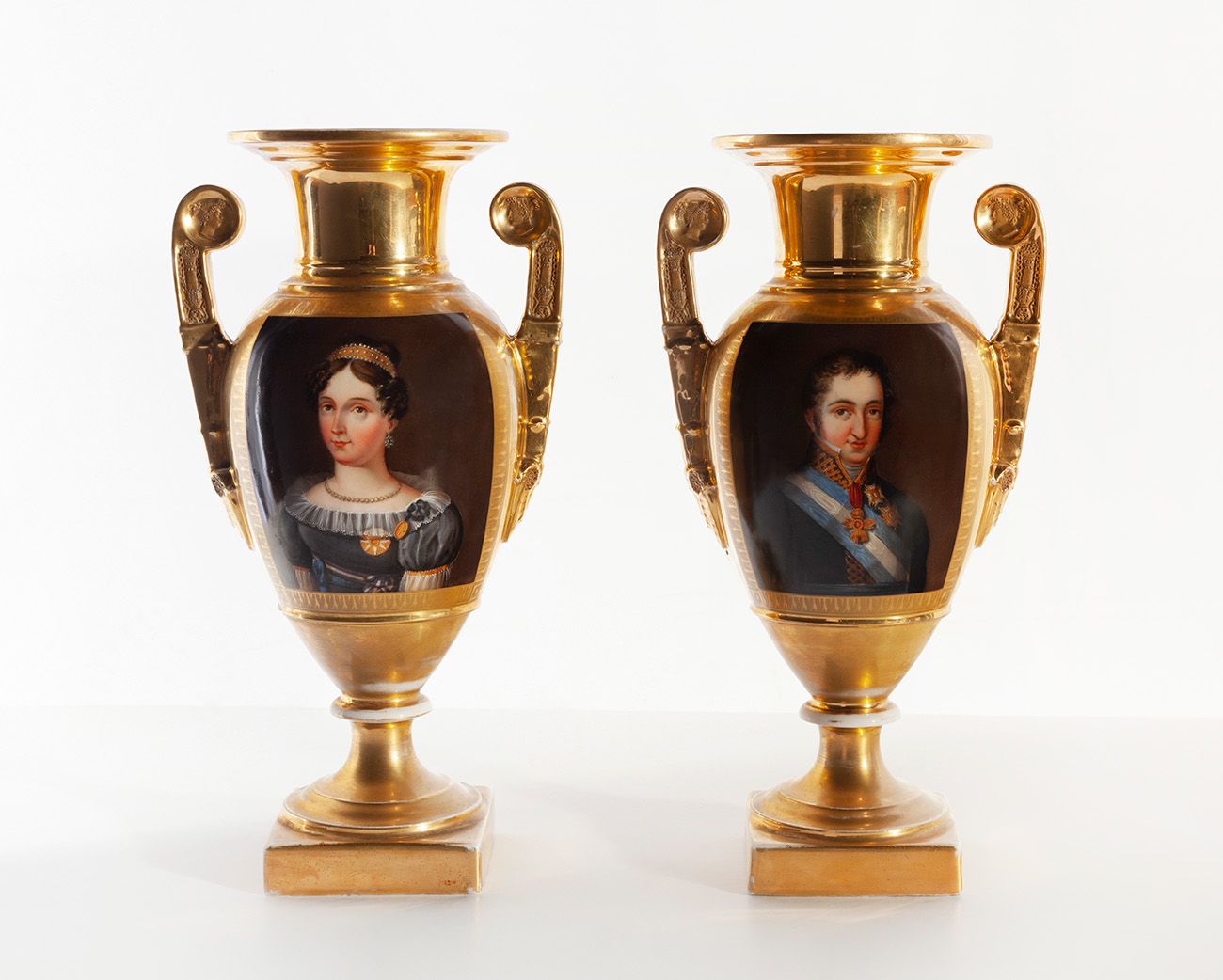Description
Pair of Old Paris vases, ca.1820. Enamelled and gilded porcelain. With representation of Ferdinand VII and his first wife. On the back, it presents the coat of arms of Spain in matt-glossy gilding. Measurements: 38 x 21 x 15 cm. Pair of vases in gilt porcelain, with ovoid bodies with enamelled representation of Ferdinand VII with a toisson on his chest in the central medallion, his wife being the one represented in the other vase. The whole piece shows great French refinement. Paris Porcelain, also known as Old Paris, is a designation that groups together the production of a series of smaller manufactories established in Paris from the last quarter of the 18th century to the end of the 19th century. The first factories appeared around 1770, following the discovery of a kaolin deposit in Limoges. During the 18th century, the so-called Paris porcelain was that made and decorated in Paris, although in the 19th century it also included pieces made in the provinces and decorated in the capital. Production was homogeneous in all the factories, with good kaolin paste and gilded decorations, used with royal permission, although it would not be Sèvres gold until the French Revolution, when the monarchy disappeared and with it the royal privileges of the crown factories. It was precisely the date of the Revolution that marked the beginning of the expansion of Paris Porcelain; production increased, with pieces following the stylistic and typological models of Sèvres, important technical improvements were achieved and a new and thriving clientele was supplied: the bourgeoisie. Following the Sèvres models, coloured backgrounds (dark blues, browns, blacks, yellows, oranges, etc.), gilt motifs and figurative decorations of pictorial quality dominated. The influence of the Louis XIV style was also important in these factories in the 19th century, not only in the decorations but also in the typologies.
143
Pair of Old Paris vases, ca.1820. Enamelled and gilded porcelain. With representation of Ferdinand VII and his first wife. On the back, it presents the coat of arms of Spain in matt-glossy gilding. Measurements: 38 x 21 x 15 cm. Pair of vases in gilt porcelain, with ovoid bodies with enamelled representation of Ferdinand VII with a toisson on his chest in the central medallion, his wife being the one represented in the other vase. The whole piece shows great French refinement. Paris Porcelain, also known as Old Paris, is a designation that groups together the production of a series of smaller manufactories established in Paris from the last quarter of the 18th century to the end of the 19th century. The first factories appeared around 1770, following the discovery of a kaolin deposit in Limoges. During the 18th century, the so-called Paris porcelain was that made and decorated in Paris, although in the 19th century it also included pieces made in the provinces and decorated in the capital. Production was homogeneous in all the factories, with good kaolin paste and gilded decorations, used with royal permission, although it would not be Sèvres gold until the French Revolution, when the monarchy disappeared and with it the royal privileges of the crown factories. It was precisely the date of the Revolution that marked the beginning of the expansion of Paris Porcelain; production increased, with pieces following the stylistic and typological models of Sèvres, important technical improvements were achieved and a new and thriving clientele was supplied: the bourgeoisie. Following the Sèvres models, coloured backgrounds (dark blues, browns, blacks, yellows, oranges, etc.), gilt motifs and figurative decorations of pictorial quality dominated. The influence of the Louis XIV style was also important in these factories in the 19th century, not only in the decorations but also in the typologies.
